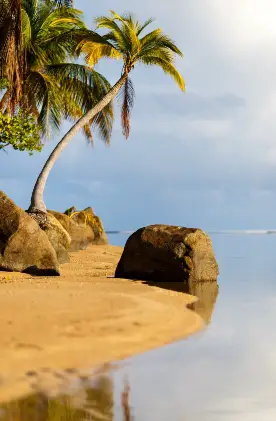My name’s Timothy Dhalleine and welcome to my travel guide on the amazing EcoCamp Patagonia in Torres del Paine National Park, Chile.
I was born and raised in Hesdin, a small village in Northern France. There I used to go out a lot to the countryside with my parents. My mother had a strong passion for photography and would spend hours observing birds and landscapes. She immortalised these moments with her camera.
That’s when I developed a sharp eye for the details of nature. But I really started playing with a camera as a teenager – making short movies with my friends. These videos became a passion and helped me develop a sense of composition. This became crucial to my photography today.
Then I studied and lived abroad for a few months – in countries such as Sri Lanka, Ecuador and Australia. I turned from an amateur into a professional photographer and would never go outside without my camera.
I started to seek wild places and ended up in Chile in 2014 where I secured a job as a resident photographer and video maker for EcoCamp Patagonia in Torres del Paine National Park, Chile. It was a dream come true!

Inspiration to Move to EcoCamp Patagonia
The main reason why I ended up in Chile was because I met a beautiful Chilean girl that became my wife! I actually visited this country seven years ago and knew then that I wanted to live somewhere in the wild.
I had previously worked in sustainable tourism at some remote and wild locations – so I was accustomed to inhabit places of wild beauty. And I knew Chile was full of such places! I scored myself an interview with EcoCamp Patagonia who told me they needed a storyteller to live here.
I began studying the map and geography of Southern Chile with this new job opportunity. Patagonia is a huge region (1.043 million km²) and at that time I was only aware of the main natural landscapes and attractions.
As we moved to Torres del Paine, it was impossible not to shed a tear. The landscapes were astonishing. Back then this national park was far less popular than it is today. If it wasn’t on my bucket-list then, it was just because I was ignorant. To be honest, it should be on everyone’s bucket-list.
Every new landscape is unique and everyday offers new surprises. Each time I go exploring in Torres del Paine it just feels like the first day.

6 Years Living and Working at EcoCamp Patagonia
I’ve spent the last 6 years working and living at EcoCamp Patagonia – it’s my second home! This ecolodge is the world’s first geodesic dome hotel. However, the uniqueness of this place goes far beyond the domes.
The surrounding landscapes – with a view of the granite spires that give the national park its name – are extraordinary. There’s plenty of wildlife too. It’s common to see pumas hanging out between the domes. Then there’s the people you meet here which makes it a place of real connection.
I’ve done all the hikes that are available at the park (dozens of them) and also the multi-day treks. This includes the famous “W” and “O Trek”. The national park is basically my backyard. But it doesn’t mean I know it all: it’s so vast that there are always new forests, glaciers and valleys to discover.
Also, Torres del Paine is heaven for nature photographers as the conditions are always changing. The different colours, weather and animals constantly provide new experiences every time you go outdoors with your camera.

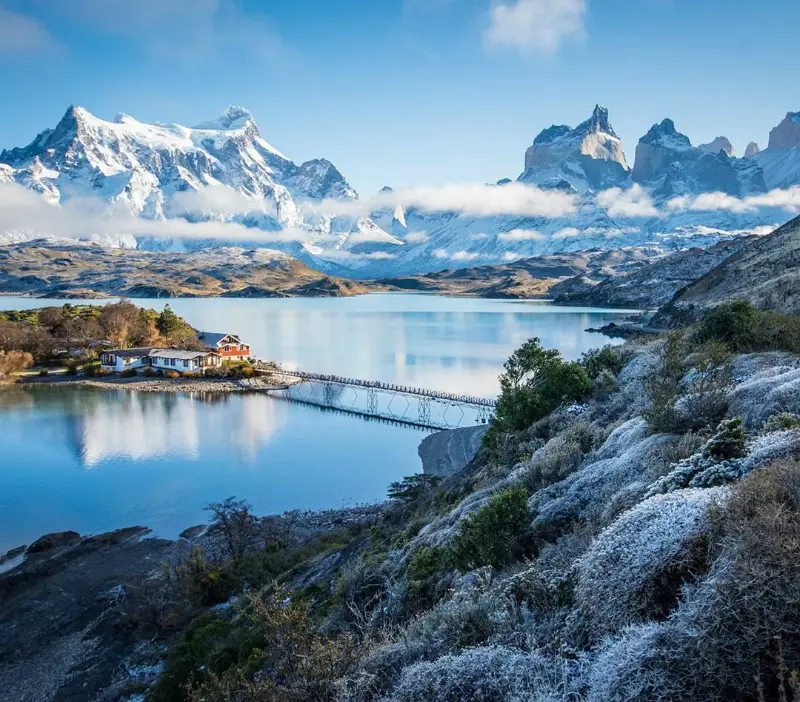

Accommodation at EcoCamp Patagonia
At EcoCamp Patagonia, you stay in geodesic domes. There are three types of domes (a total of 33). The Standard Dome is the original EcoCamp dome, a small dome with no electricity, no heating and a shared bathroom. It’s rustic and beautiful – ideal for hikers looking for more comfort than a tent.
Then you have the Superior Dome with more space, a propane gas heater and a small bathroom. Finally, the Suite Dome is the most spacious with a woodstove and large bathroom. Whichever dome you stay in, you’ll have that experience of feeling the elements of nature from your dome.
Unlike a classic hotel room you can listen to the wind as it blows or the birds sing outside. It’s like a tent but way more comfortable! As for the common areas, you can socialise in the Community Domes – 4 domes (2 restaurants, 1 bar dome and 1 living dome) that are all interconnected.
The mood is really cool there, relaxed and with some friendly service that breaks with the classic “formal” service you find at other hotels. EcoCamp Patagonia also offers options for tours. From the classic multi-day treks to multi-sport adventures including horse riding, kayaking and hikes.
The most popular tour is the Wildlife Safari where you stay every day at the EcoCamp and have 3 daily choices of excursions, from an easy nature walk to a demanding trek. This is a great way to mix wildlife and hiking.
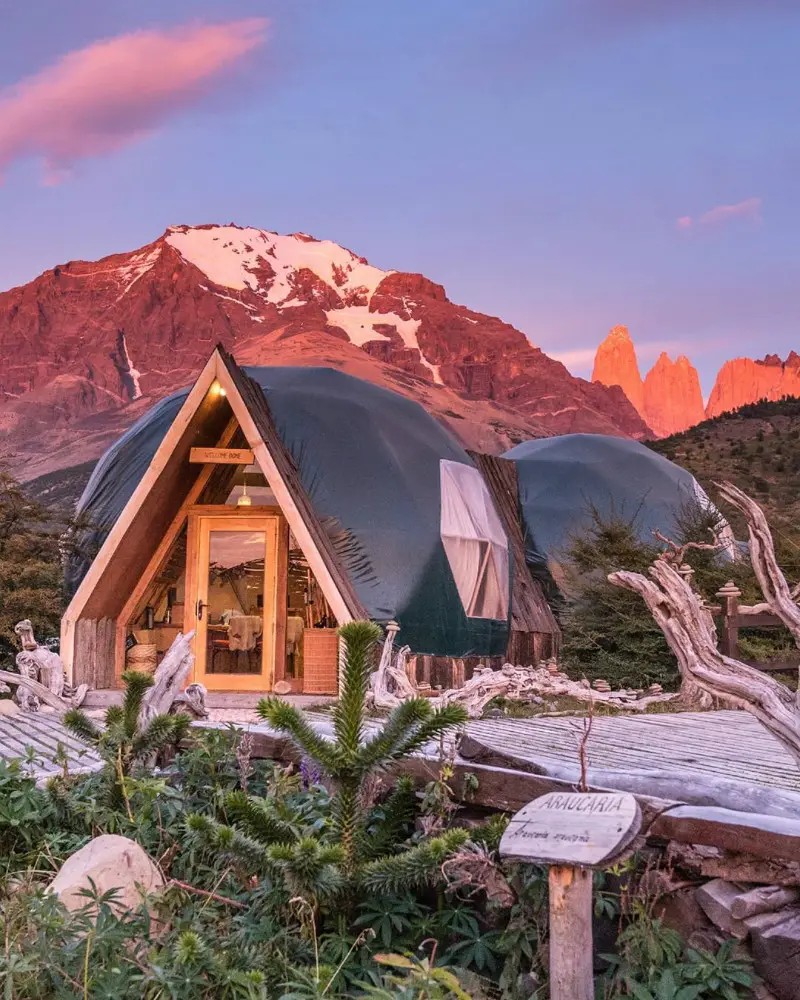


Why Torres del Paine National Park is Awesome
Torres del Paine National Park in Chilean Patagonia became really famous for a good reason. In “just” 1,814 km², you’ll find plenty of trails of all levels. The density of epic landscapes is incredibly high and so is the wildlife.
As long as you like nature, you’ll meet your match. And it’s definitely the most photogenic place in Patagonia with lots of picture-perfect spires and colours that evolve every month. The place is incredibly different whether you come in Autumn (April/May) or Summer (December to February).
Finally, it offers the most complete trekking experience in Patagonia. I’ve done most of the classic multi-day treks in Patagonia – both in Chile and Argentina – but nothing compares to the raw beauty of the full Paine Circuit (“O Trek”), a one-week hike through pristine landscapes.

Favourite Photography Spots in Torres del Paine
I have no single favourite place in Torres del Paine but many favourite spots for photography. If I’m looking for wildlife, I head to the eastern side of the park (Laguna Azul/Laguna Amarga) where one can find herds of guanacos, plenty of birdwatching opportunities and a high density of pumas.
When I’m seeking the best landscape shots, I tend to wake up early and go for a hike far from the crowds. There are some fantastic trails like Cerro Paine (starts from EcoCamp Patagonia), Lazo Weber and Mt. Ferrier.
All of them require hiking experience and offer stunning views of the surrounding lakes and granite peaks. The highlight, of course, is that you can enjoy these landscapes for yourself without another person in sight.
The most famous and photogenic area is definitely Lake Pehoe for its spectacular shades of blue and sweeping views of the Paine mountain range. I highly recommend taking in this incredible landscape at sunrise!

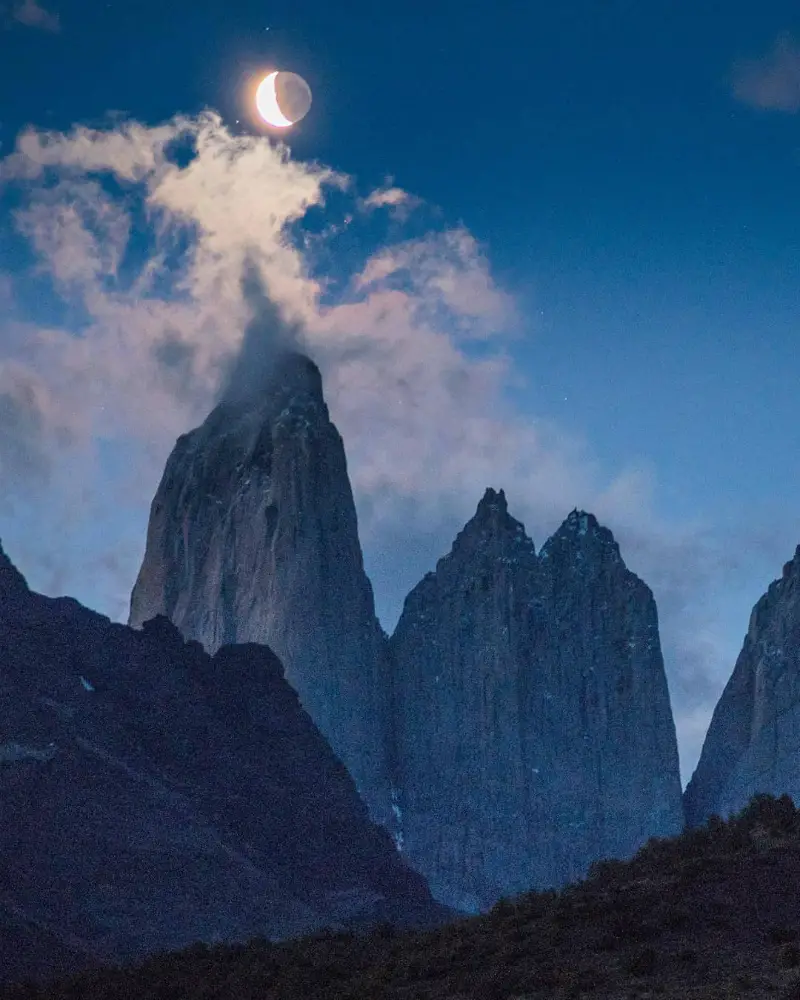

Incredibly Rich Wildlife of Torres del Paine
The wildlife in Patagonia is simply surprising. You can find some famous animals like condors and guanacos in huge quantities, especially around Torres del Paine National Park. It’s not rare to spot 40 condors together.
Bird lovers will also see other awesome birds like the Magellanic woodpecker and different species of owls. But the all-time favourite is the puma which can be found in Patagonia’s vast plains. This big cat (which can weigh up to 100 kilos) is photogenic and likes to pose with the mountains as a backdrop.
It’s impossible not to enjoy photographing pumas – also because finding them is a nice challenge. There are other amazing animals to discover too like the endangered huemul (South Andean deer) and armadillos.
I’ve had the chance to meet these animals on hiking trips, alone with the best backgrounds: an emotion that goes far beyond pressing the shutter!



Main Attractions & Hidden Gems of Patagonia
The other classic area of Patagonia is of course in Argentina. In Los Glaciares National Park, you’ll find some incredible views of stunning granite peaks like Mt. Fitzroy and Cerro Torre. You’ll also see the most accessible glacier in the Americas, the awe-inspiring Perito Moreno Glacier.
El Chalten is a small village in the heart of Los Glaciares National Park and is my favorite town in Patagonia. You can do plenty of incredible day hikes from there. But I also love less known places in both Argentina and Chile.
Dientes de Navarino in Navarino Island (Chile) is the southernmost trek on earth and is amongst the best treks I’ve ever done. It starts in Puerto Williams, the southernmost city in the world. I recommend it for its remoteness. Here, you’ll learn what “wilderness” truly means.
Finally, I can only recommend heading to Chile’s Aysen region and driving the Carretera Austral highway. It’s the most beautiful road in Patagonia, a 1240km or 770 mile road trip through awesome national parks and nature reserves like Pumalin, Patagonia National Park, Queulat and Cerro Castillo.
In Chile’s Aysen region you’ll find some of the most beautiful hidden gems on the planet, like the Marble Caves and the Baker River. I went there twice and I would go back again as many times as I can.


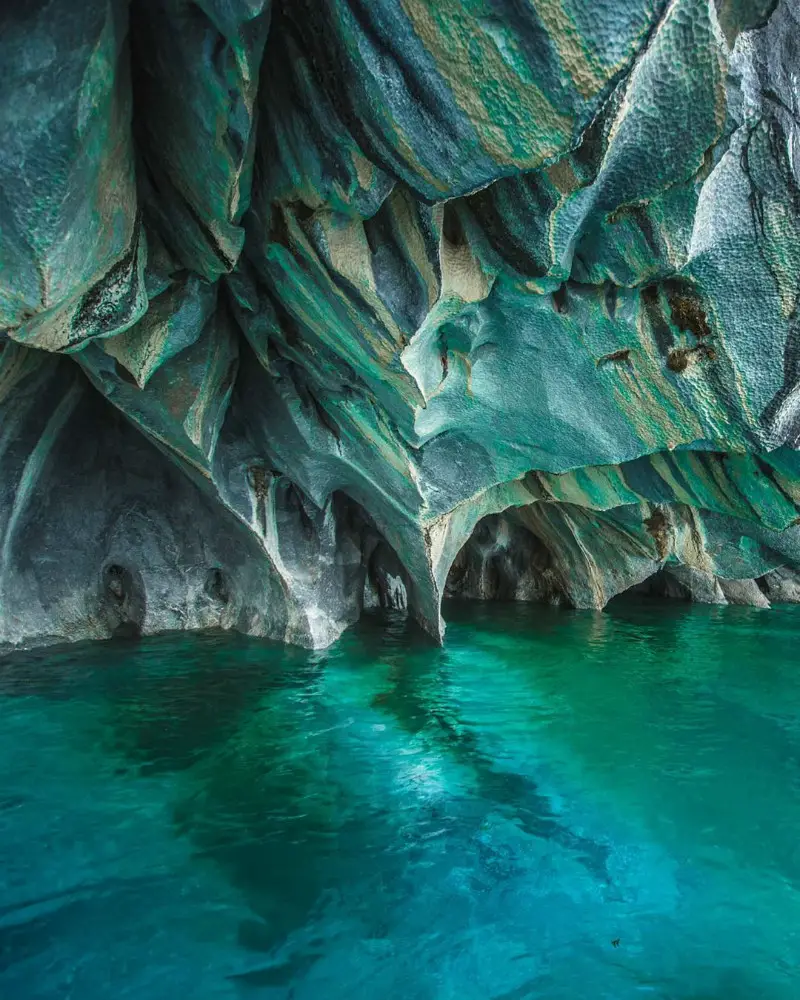
Chilean Patagonia vs Argentinian Patagonia
I would say both Chile and Argentina offer different experiences in Patagonia. Some of the landscapes are similar, especially when it comes to comparing Torres del Paine National Park and Los Glaciares National Park.
While it is true that most of Argentinian Patagonia is basically a desert (vast dry plains called “pampa”), there are beautiful green areas around Ushuaia and you will find the best area for marine wildlife at Valdes Peninsula (best place for whale watching). There is also a strong culture in Argentina.
As for Chilean Patagonia, this country provides a great opportunity if you want to mix both landscapes and wildlife. If you don’t have much time, Chile offers an incredible diversity of places and activities. And there is more water, so there are plenty of forests and glaciers you can explore.
I’ve always enjoyed green landscapes which is maybe why I have a special taste for Chile. But you should try and see both countries if you can!


Tips for your Visit to EcoCamp Patagonia
Firstly, you should understand that distances are massive in Patagonia. For instance, the most common way to reach EcoCamp Patagonia is to land in Punta Arenas, a 6-hour drive from there. So if you plan a trip to Patagonia, you should plan at least one week (hopefully two) to explore the area.
Then, you should inform yourself on the weather. It’s hard to predict the weather in this region of South America. While there are trends depending on the time of year, it’s common to experience four seasons in a day.
You have to pack your bag accordingly. The rule of three layers of clothing is key! If you want to stay at EcoCamp Patagonia and plan on exploring Torres del Paine National Park then be prepared for powerful winds.
Finally, be cautious when it comes to your activities. I’ve seen people with no hiking experience attempt the “O Trek” and believe me, even though there is nothing technical here, some hikes are demanding. So you’d better be in good shape if you plan a trek like this one.
But no worries! If you have no hiking experience, you’ll find plenty of easy excursions in Patagonia. You’ll find beauty everywhere even while driving. Thanks for reading my guide on the amazing EcoCamp Patagonia and its surrounding landscapes. Enjoy your adventures here!










